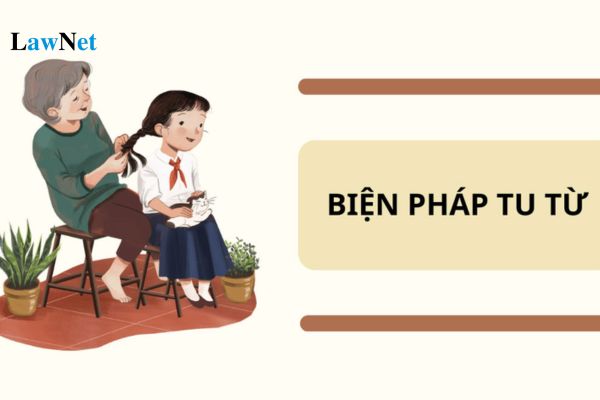What are the rhetorical devices used in Vietnamese literature and examples thereof? What literary knowledge does the 6th-grade Literature curriculum in Vietnam cover?
What are the rhetorical devices used in Vietnamese literature and examples thereof?
Rhetorical devices do not change annually; they are artistic methods used in literature and communication to enhance the expressiveness, imagery, and appeal of language. Below are popular rhetorical devices:
- Comparison
Concept: Juxtaposing two objects or phenomena with similarities to highlight the traits of one of them.
Example: "The old mother is like a ripe banana on the tree."
- Personification
Concept: Attributing human traits, actions, and emotions to objects, plants, or animals.
Example: "The river sings a gentle song."
- Metaphor
Concept: Naming one object or phenomenon by the name of another with similar characteristics.
Example: "My second mother is the teacher."
- Metonymy
Concept: Using a part or a close characteristic of an object to name the whole.
Example: "The whole class rejoiced." ("The whole class" refers to all the students in the class)
- Repetition
Concept: Repeating words or phrases to emphasize and create rhythm in a sentence.
Example: "Mother, do you know? Mother is the light, Mother is the faith."
- Hyperbole (Exaggeration)
Concept: Exaggerating the situation or phenomenon to emphasize or create impact.
Example: "Running as fast as a rocket."
- Euphemism
Concept: Using mild language to reduce negativity.
Example: "He has returned to the ancestors." (Instead of saying "He has passed away")
- Enumeration
Concept: Arranging a series of words or phrases of the same type to clarify or increase expressiveness.
Example: "I love my country with its rivers, fields, mountains, and gentle people."
- Pun
Concept: Utilizing the similarity in sound or meaning of words to create humor or depth.
Example: "The old woman goes to Cau Dong Market, Queries a fortune whether marriage is beneficial?"
- Contrast
Concept: Placing two images or words with opposite meanings to highlight characteristics of each subject.
Example: "When people are sad, the scenery never seems cheerful."
- Inversion
Concept: Changing the order of words in a sentence to emphasize content.
Example: "Bending under the mountain are a few plucking woodsmen." (Standard sentence: "A few woodsmen are bending under the mountain.")
- Rhetorical Question
Concept: Posing a question without needing an answer to emphasize meaning or express feeling.
Example: "When will I ever be able to repay the gratitude to my parents?"
Information is for reference only!

What are the rhetorical devices used in Vietnamese literature and examples thereof? What literary knowledge does the 6th-grade Literature curriculum in Vietnam cover? (Image from the Internet)
What literary knowledge does the 6th-grade Literature curriculum in Vietnam cover?
Under the General Education Program for Literature as issued with Circular 32/2018/TT-BGDDT, the literary knowledge in the 6th-grade Literature curriculum in Vietnam includes:
[1.1] The expressiveness of the literary text
[1.2] Details and the relationship between details in literary texts
[1.3] The theme and subject of the text; the emotions and feelings of the author
[2.1] Elements: plot, characters, narrator's voice, and characters' speech in legends, fairy tales, and fables
[2.2] First-person narrator and third-person narrator
[2.3] Formal elements of six-eight poetry: number of syllables, lines, rhyme, rhythm
[2.4] Title, lines, stanzas, rhyme, rhythm, words, and the effects of these elements in the poem
[2.5] Elements of narration and description in poetry
[2.6] Forms of note-taking, narration style, first-person narration in memoirs or travelogues
Moreover, the text corpus used in the 6th-grade Literature curriculum includes:
(1) Literary Texts
- Legends, fairy tales, fables, short stories
- Poetry, six-eight verse poetry
- Memoirs or travel diaries
(2) Argumentative Texts
- Social argumentation
- Literary argumentation
(3) Informative Texts
- Texts recounting an event
- Recording minutes
- Content summary diagrams
What are the literary competencies required for 6th-grade students in Vietnam?
Under Section IV of the General Education Program in Literature issued alongside Circular 32/2018/TT-BGDDT, the literary competencies required for 6th-grade students in Vietnam are:
- Identify and distinguish different types of literary texts: stories, poems, plays, essays, and some typical genres of each; analyze the effects of some formal artistic elements belonging to each literary genre; understand the explicit and implicit content of literary texts.
- Present feelings, thoughts about literary works and the impact of works on oneself; initially create some products with literary characteristics.
- Recognize the subject, understand the theme, meaning of the text read; identify folk tales, short stories, lyrical poetry, and narrative poetry; lyrical essays and narrative essays.
- Recognize the lyrical subject, lyrical character, and the expressive and cognitive values of literary works;
- Recognize and analyze the effects of some formal elements and artistic measures associated with the characteristics of each literary genre (plot, narration, character dialogue, space and time, rhyme, rhythm, imagery, and rhetorical devices like metaphor, metonymy, hyperbole, and understatement).
What are the bases for assessing the training results of 6th-grade students in Vietnam?
Under Clause 1 Article 8 Circular 22/2021/TT-BGDDT, the basis for assessing the training results of 6th-grade students in Vietnam is prescribed as follows:
- Assess training results of students based on requirements for traits and general capacity by subjects and education level under general programs and requirements for specific capacity under subject program in formal education program.
- Subject teachers shall rely on Point a of this Clause to provide feedback and assess training results, improvement, advantages, and disadvantages of students during training and learning process of the subjects.
- Class advisors shall rely on Point a of this Clause to monitor training and learning process of students; consult feedback and assessment of subject teachers and feedback of students’ parents, relevant, agencies, organizations, and individuals in educating students; instruct students on how to perform self-assessment; provide feedback and assess training results of students based on categories under the above section.

